Until the discovery of the hypothetical Planet Nine, Uranus remains the most “unique” planet compared to the other seven planets in our Solar System.
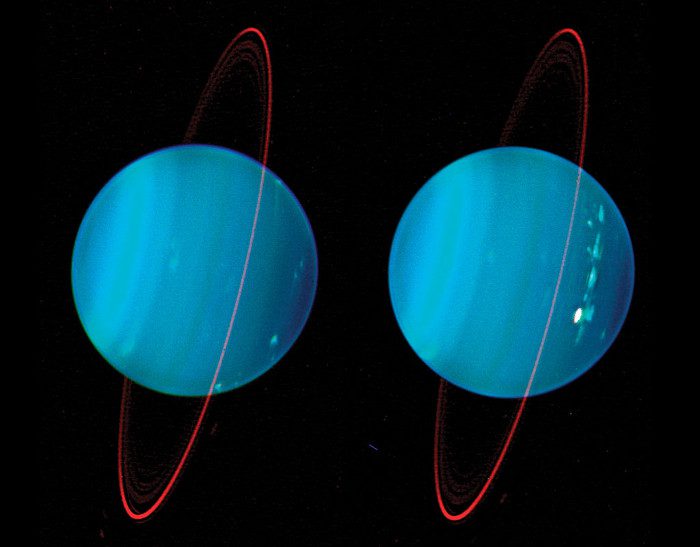
Uranus is the seventh planet in the Solar System, primarily composed of hydrogen and helium.
On January 24, 1986, the unmanned interplanetary spacecraft Voyager 2 flew by the seventh planet of the Solar System, Uranus, on its journey beyond the Solar System. This was the first and only time we visited a gas giant planet. It is located in a very unusual position in our Solar System.
Throughout ancient times, scholars only recognized the existence of six planets: Mercury, Venus, Earth, Mars, Jupiter, and Saturn, which are visible to the naked eye. It was only with the invention of advanced telescopes that we discovered more planets within the Solar System.
Although we can see Uranus with the naked eye and have observed this planet throughout history, in ancient times, it was considered a star rather than a planet of the Solar System. It wasn’t until March 13, 1781, that astronomer William Herschel observed it and thought it was a comet. He described his observations:
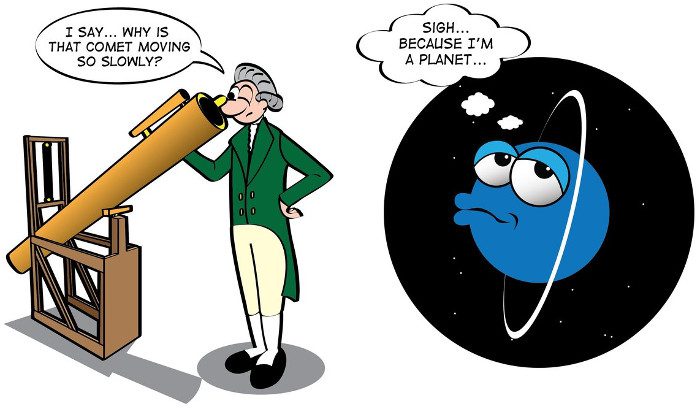
Initially, humanity thought Uranus was a star. Later, William Herschel mistakenly thought it was a comet.
“The first time I observed this comet, the magnification of the telescope was 227. From my experience, I knew that the diameter of fixed stars does not increase with the magnification of the telescope, but planets do. Therefore, I increased the magnification to 460 and 932 and discovered that the diameter of this comet increased in proportion to the brightness. Thus, based on the hypothesis that it is not a fixed star, while the diameter of the stars I used for comparison did not increase proportionally.”
“Moreover, through the telescope, the comet had a greater apparent brightness than the amount of light it could emit, causing it to appear hazy and indistinct at this high magnification. Meanwhile, stars usually maintain their brightness and distinctiveness, which I have known through thousands of observations. The consequence indicates that my conjectures are entirely justified, proving it to be a comet as later observations confirmed.”
Note: Although the term “star” exists in Vietnamese, a comet is not a “star” in the true sense. A comet is merely a celestial body moving in the Solar System, typically with a parabolic orbit, and its size is relatively small compared to planets. Due to its highly eccentric orbit, it only begins to shine when it approaches the Sun, increasing in brightness as it gets closer. Conversely, as it moves away from the Sun, it dims and nearly disappears at its farthest point.
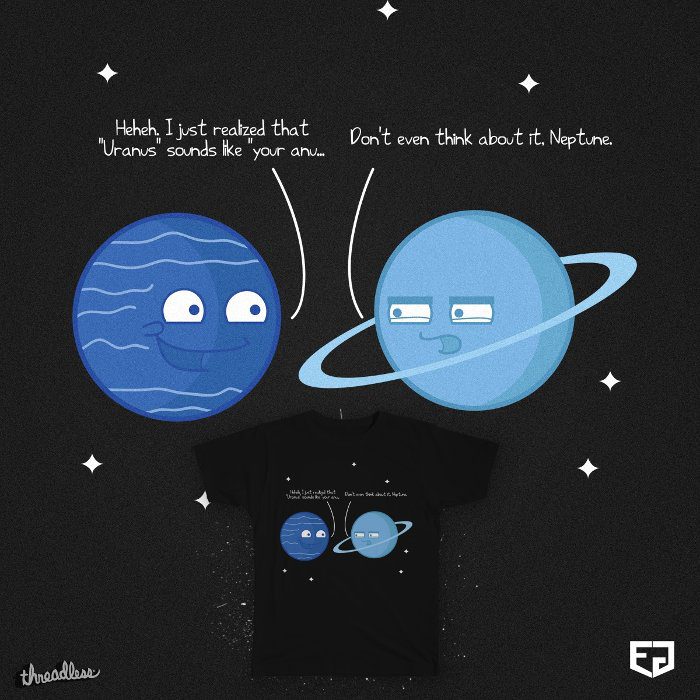
The English name of this planet sometimes brings a bit of “trouble.”
It wasn’t until Herschel shared his discovery with another astronomer, Nevil Maskelyne, that they realized it was not a comet; it orbited the Sun like a planet. Observations from other astronomers helped him confirm his discovery, and he had the honor of naming this planet. He called it “Georgium Sidus”, or George’s Star, in honor of his king.
However, this did not please the European astronomical community, and in 1782, German astronomer Johann Elert Bode proposed the name Uranus, Latinized from the Greek god Ouranos. Nonetheless, it took decades for this name to be widely adopted.
The discovery of this new planet became a groundbreaking news in the astronomical community, opening the door for the exploration of other new planets in the Solar System.
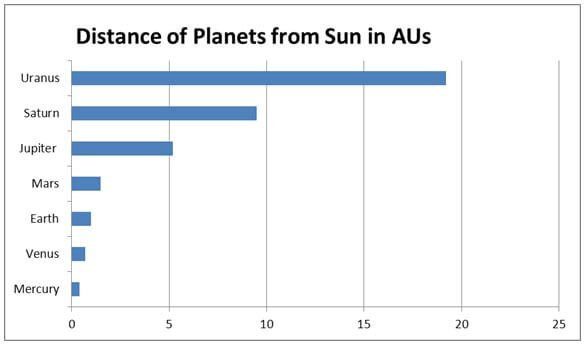
The distance from the Sun to the first 7 planets measured in AU, where 1 AU = the distance from Earth to the Sun.
In the following centuries, astronomers made observations of the orbit, discovering five moons, a ring system, and the unusual axial tilt of this planet. Unlike other planets in the Solar System, Uranus has an axial tilt of 97.77° with one pole facing the Sun.
However, it wasn’t until the 20th century that Uranus received significant attention from astronomers.
In 1965, Gary Flandro, a student at the California Institute of Technology and an employee at the Jet Propulsion Laboratory, began a project mapping locations NASA should explore. Discovering this planet was a primary goal. He started plotting the orbit of Uranus to assess feasible options. He then realized that “Jupiter, Saturn, Uranus, and Neptune would align on one side of the Sun within 14 years.” according to Jay Gallentine in Ambassadors from Earth: Pioneering Discoveries by Unmanned Spacecraft.
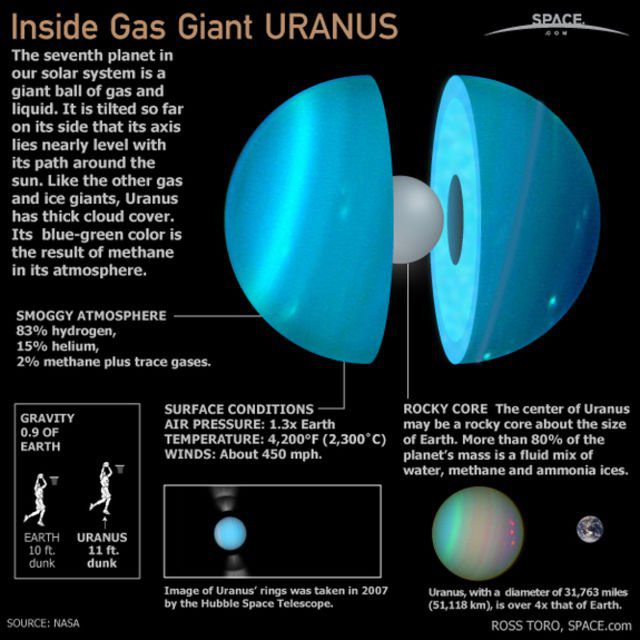
Current human understanding of Uranus.
This was the first step in recognizing a new space program, one that would ultimately explore the outer reaches of the Solar System – Voyager. This ambitious project developed two spacecraft for the journey to the farthest edges of the Solar System.
In 1977, both spacecraft launched directly towards Saturn. On September 5, Voyager 1 flew past Jupiter and Saturn before continuing out of the Solar System. Voyager 2 launched on August 20, flew past Jupiter, Saturn, Uranus, and Neptune before exiting the Solar System.
On January 24, 1986, Voyager 2 reached its closest point to the seventh planet of the Solar System, approximately 50,600 miles (over 80,000 km) from its surface.
While there, Voyager 2 discovered a wealth of new information about this planet – in addition to examining previously discovered natural satellites, including: Miranda, Ariel, Umbriel, Titania, and Oberon, it also discovered several other moons such as: Cordelia, Ophelia, Bianca, Cressida, Desdemona, Juliet, Portia, Rosalind, Belinda, Perdita, and Puck.
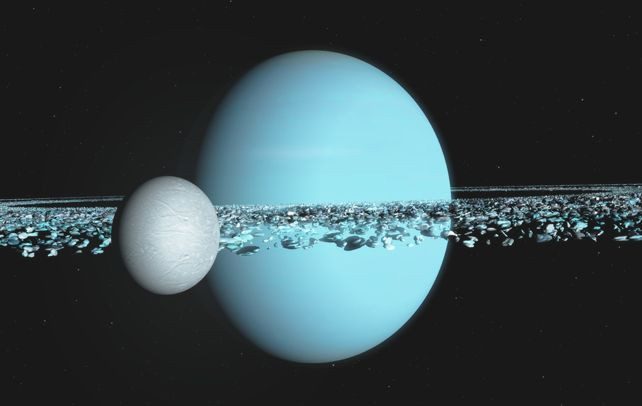
Like Jupiter and Saturn, Uranus has many “children.”
This probe also uncovered some fascinating details about Uranus’s atmosphere. The weather here is extremely volatile, primarily composed of hydrogen and helium. One of the significant discoveries was the planet’s magnetic field is quite peculiar.
The encounter lasted 5.5 hours before Voyager 2 continued on its journey to the next planet – Neptune – with the help of gravity.
Since then, humans have continued to learn about this planet. We have observed auroras in the planet’s atmosphere. Additionally, we have recently learned that the atmosphere of this planet is rapidly warming. There is still much more to discover about Uranus.
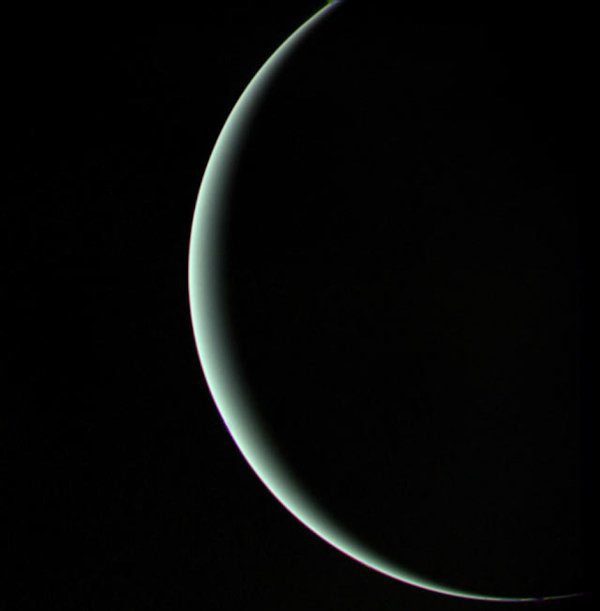
Will humanity ever visit this “one-of-a-kind” planet again?
To date, no other spacecraft has been sent to Uranus. There have been several proposed missions, although none have been prioritized as much as missions to Mars, Jupiter, or Saturn. As of 2015, NASA began considering a new mission, potentially to be carried out in the 2020s. Another mission to Uranus may require an orbiter to provide detailed information about this mysterious planet.


















































